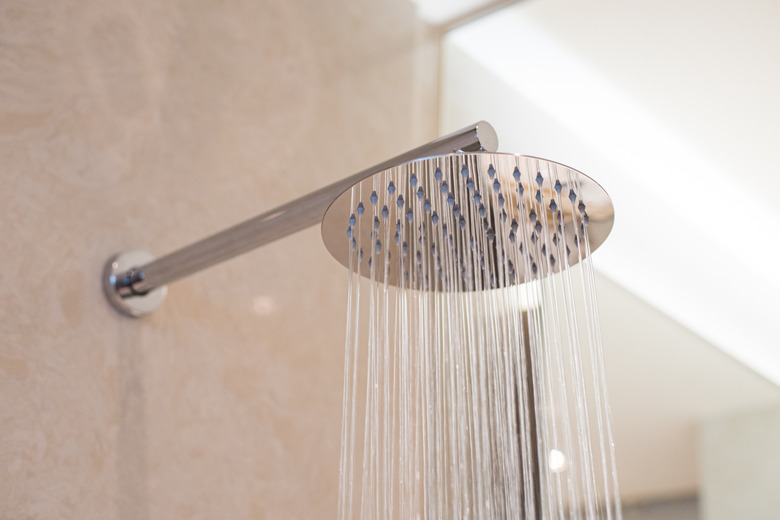How To Remove A Water Restrictor From A Delta Showerhead
We may receive a commission on purchases made from links.
Any showerhead made since 1995 will contain a water restrictor as per policy driven by the U.S. Environmental Protection Agency. The water restrictor's job is to ensure that the flow out of the showerhead doesn't exceed 2.5 gallons per minute.
This helps to curb water usage since showers can be a large portion of a household's water volume. The restriction decreases your monthly water bill and helps to conserve water nationwide. All showerheads contain this restrictor, but homeowners can remove it if they wish.
Choosing Whether to Remove Restrictors
Choosing Whether to Remove Restrictors
Normally, the restrictor shouldn't be removed, but if the house has low water pressure, the restrictor can reduce pressure even further, making the shower more like a drizzle. If this is the case and you're sure the low water pressure isn't due to buildup in the lines, it's relatively easy to remove the restrictor from a Delta showerhead.
Keep in mind that Delta's customer support page doesn't recommend removing the restrictor from some of their showerhead technology, especially pieces designed to aerate. Check your model to see whether your water restrictor is part of another system or if it's simply set in line. If it's just a piece of the showerhead, the owner can decide to remove it to increase water flow and pressure. This may increase the water bill, as more water will be used for each shower.
How to Remove Water Restrictors
How to Remove Water Restrictors
To remove the water restrictor, you'll need some standard tools: needle-nose pliers, an adjustable wrench or two, plumber's tape, a towel or rag and some paper clips. You don't necessarily have to turn off the water to the shower since you're not intending to open the shower valve, but it's a safe thing to do.
To remove the showerhead, find where it connects to the water source. Using the rag or towel to protect the surface from scratching, unscrew the nut with the wrench. Usually, you'll be able to unscrew the connection while holding the showerhead, but in cases of a tight connection, use another towel and wrench to hold one piece in place while turning with the other. Then remove the showerhead from the shower arm. If it's connected with a hose, remove the head from the hose as well.
Finding the Flow Restrictor
Finding the Flow Restrictor
Examine your model of showerhead. Normally, there is a gasket, washer or O-ring that can be removed using needle-nose pliers or an unfolded paperclip. There may be a mesh filter or screen as well that needs to be removed.
The flow resistor itself is a plastic piece that sits under the O-ring. They're usually brightly colored in green, yellow, pink, red or white. With most Delta showerheads, it will be an opaque plastic.
Remove this piece with the needle-nose pliers or nudge it with the end of a paperclip until it comes free. Set this piece aside and reassemble the head in the order in which it was disassembled, replacing the filter if there was one and pressing the O-ring back in place with a finger.
Putting the Showerhead Back
Putting the Showerhead Back
You'll want to remove any old plumber's tape on the threads that connect the showerhead parts and replace it with new Teflon plumber's tape. If there's a hose, replace the tape on those connections as well and reconnect the head. Screw the assembly back on the shower arm, hand-tightening until it feels snug, and then tighten it just a bit more with the wrench. Be careful not to overtighten as this can cause leaks and damage.
Check the water flow by letting the system run for a couple of minutes. The flow and pressure in the shower should have increased substantially. Also be sure there are no leaks in the showerhead.
